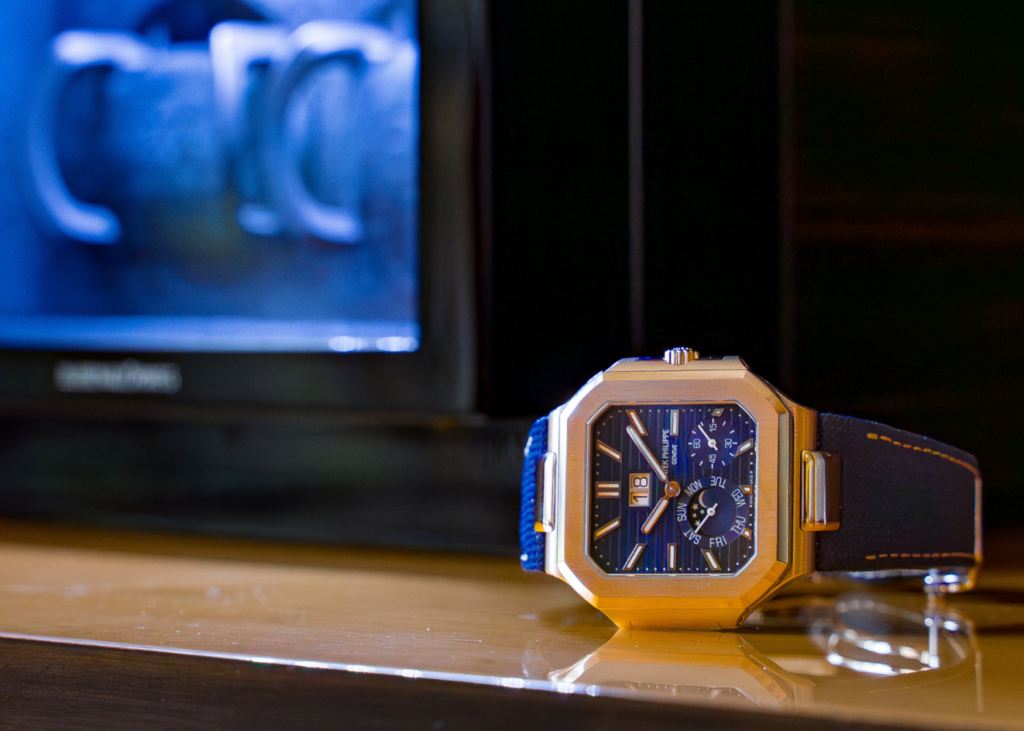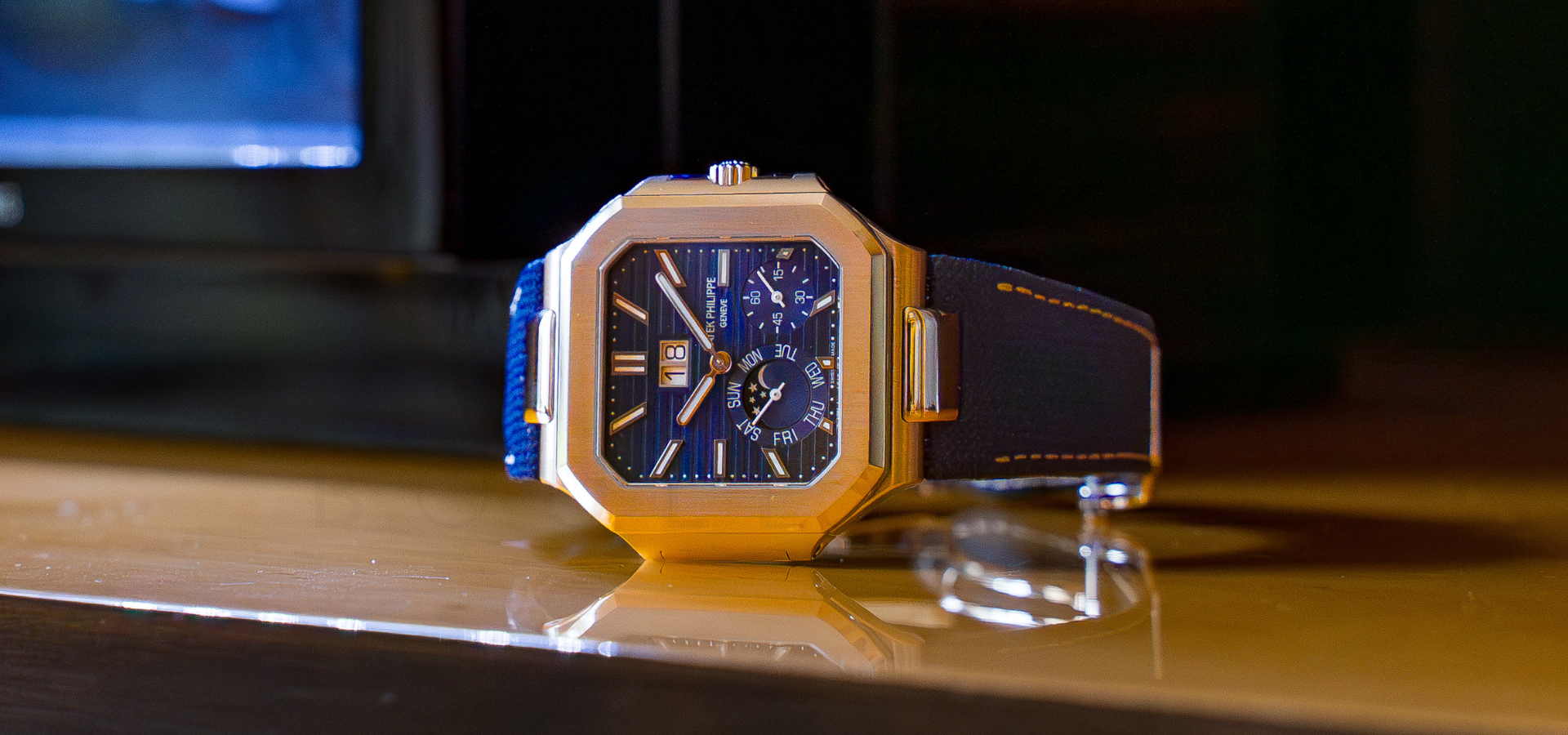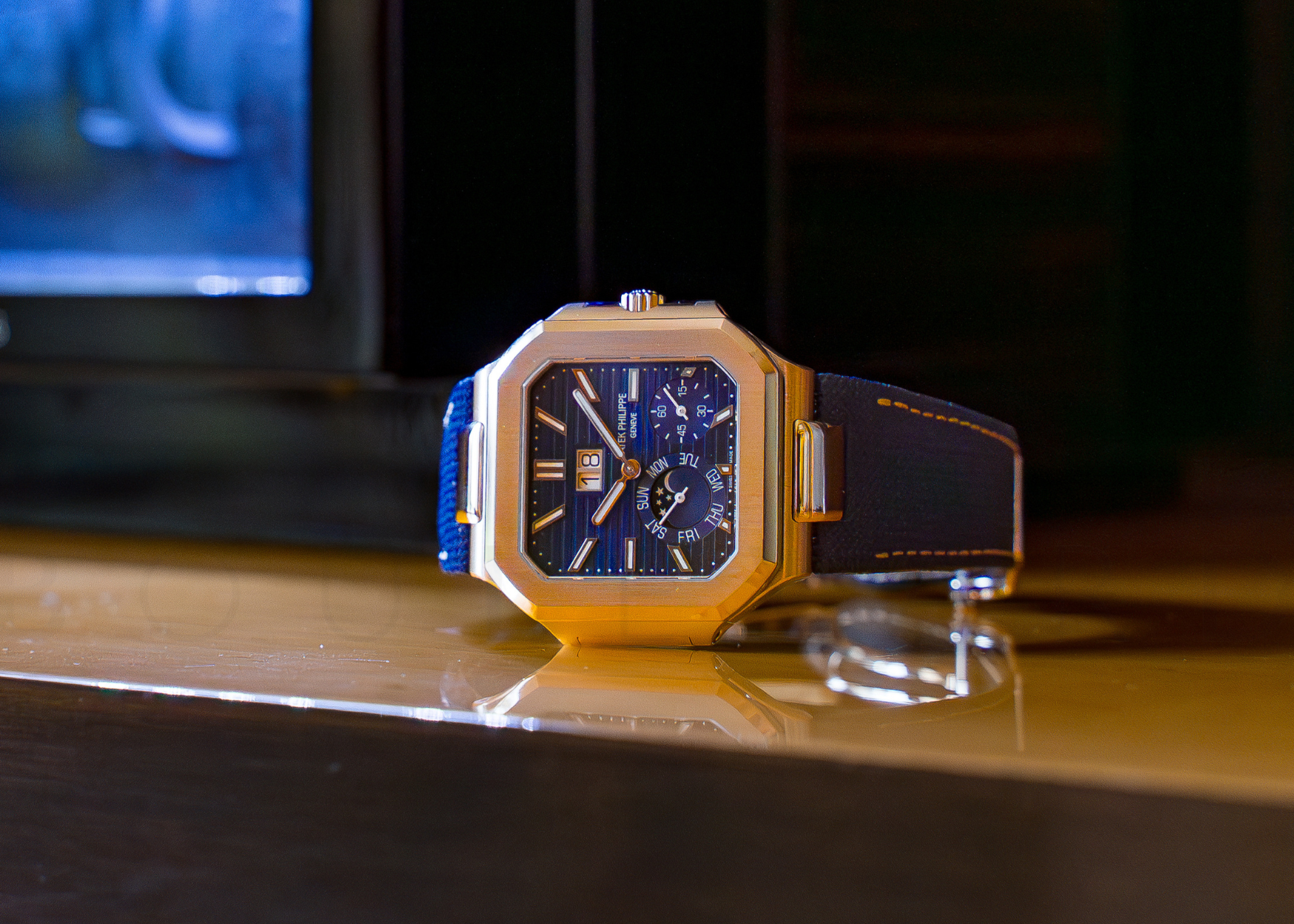Dissecting 2024’s most polarising watch launch
Undoubtedly one of the most hotly debated watch launches in recent times, the Patek Philippe Cubitus impresses IRL.
Some of the world’s most sought-after watches had been doomed to fail when they first launched: The Audemars Piguet Royal Oak and the Patek Philippe Nautilus come to mind. When Patek Philippe added the Aquanaut to the Nautilus collection in 1997, media pundits predicted it would spell the beginning of the end for the brand.
Of course, we now know that both these behemoths had the last laugh – all three watches have waiting lists the length of Kim Kardashian’s Christmas list.
If there’s anything we’ve learnt over the years, it’s that anything new is bound to polarise. While humans thrive on innovation, we’re also paradoxically sceptical of anything that pushes the boundaries.
This was evident when Patek Philippe unveiled the Cubitus in 2024, its first new collection in 25 years. The feedback was polarising, to say the least. It didn’t help, as well, that the brand lost control of the narrative when the watch image was leaked in a US-based magazine one week before its official launch.
Some people thought it was an April Fool’s joke (albeit in October…) or generated using AI by an overzealous Patek Philippe enthusiast.
In the last week of October, some 600 guests were invited to Germany for the much-anticipated collection launch. There, brand owner and director Thierry Stern spoke to a few journalists. In an interview with Swiss newspaper Bilanz that’s now gone viral, he said, “The haters are mostly people who have never had a Patek and never will. So that doesn’t bother me,” adding: “I’m confident about the Cubitus because I have a good nose and a lot of professionals around me who told me that it will work.”
It speaks volumes about the confidence of a man whose brand has soared to stratospheric heights in the past 35 years. Collectors clamour for Nautilus and Aquanaut models, and their resale values are a testament to the brand’s prestige.
Stern knows that a new Patek Philippe watch will inevitably sell. But this confidence likely masks a deeper pressure: the constant need to innovate while upholding the brand’s legacy. Every design element, every movement, and every detail must be flawless.
Leading one of the watch-world’s most beloved brands is an enviable position, but one that carries immense weight. As a watch journalist friend astutely observed, the reason horophiles were so vocal about this new release is because they are invested in every move Patek Philippe makes, in the same loving way a parent is concerned about their child.
And so the question remains: Does the Cubitus deliver?
Patek Philippe Cubitus: the verdict
In a word, Yes.
I’ll happily admit that the pictures don’t do the watch justice. You can really enjoy the Patek Philippe level of finishing and detail only when you see the timepiece up close.
There are three references available so far, although Stern did mention in an interview that the brand has already designed the collection until 2039.
The iterations are the ref 5821/1A in steel with an olive green dial and the 5821/1AR in steel and rose gold with a blue dial; and the ref 5822P in platinum with a blue dial with a grand date, small seconds and moon phase. (A cheat code for Patek Philippe references: P stands for platinum, A for steel, AR for steel and rose gold.)
At 45mm, it’s no wallflower, but it’s relatively thin at 9.6mm for the platinum version, and 8.3mm for the steel version. This was an important consideration for Stern, who mentioned at the launch that 85% of watches sold are round (a claim we can’t verify, unfortunately), and that most of the square watches on the market are too thick for his personal liking.

5822P – Cubitus with a 26-330 S C Calibre movement, Sunburst blue dial, 45-mm Platinum case and navy-blue composite strap with fabric stitching with fold-ever clasp by Patek Philippe.
It’s no secret that the Cubitus is a close cousin to the Nautilus: There are plenty of references to the iconic sports watch, from the horizontally ribbed dial with its sunburst finish to the bracelet’s comfort release clasp – a feature that allows for expansion on warmer days and is available on the steel and two-tone models. Like the Nautilus 5811G, the simple date-only Cubitus references are powered by the calibre 26-330 S C, first introduced in 2019.
Ref 5822P, on the other hand, comes with a blue composite strap with fabric stitching, which keeps the platinum timepiece more wearable. The dial layout reminds us of the Nautilus 5712, with asymmetrical counters at the bottom of the dial.
One of the most impressive feats of this timepiece is the grand date: It might seem simple at first glance, but imagine the power needed to make the date jump instantaneously (within 18 milliseconds) at the stroke of midnight. This is new for the brand, and it registered six patents for this underrated complication.
What I don’t like about this timepiece is the logo’s position, which straddles the 3 o’clock marker. It’s slightly clunky and inelegant.
But what I like or don’t doesn’t matter: According to the retailers and industry insiders we’ve spoken to, there is already a waiting list for the collection.
Once again, Patek Philippe will have the last laugh.
Go further with the Patek Phillipe Cubitus.
Featured in the ‘Vantage 2’ watch winder in Macassar, with thanks to Buben & Zorweg.
Read next:






